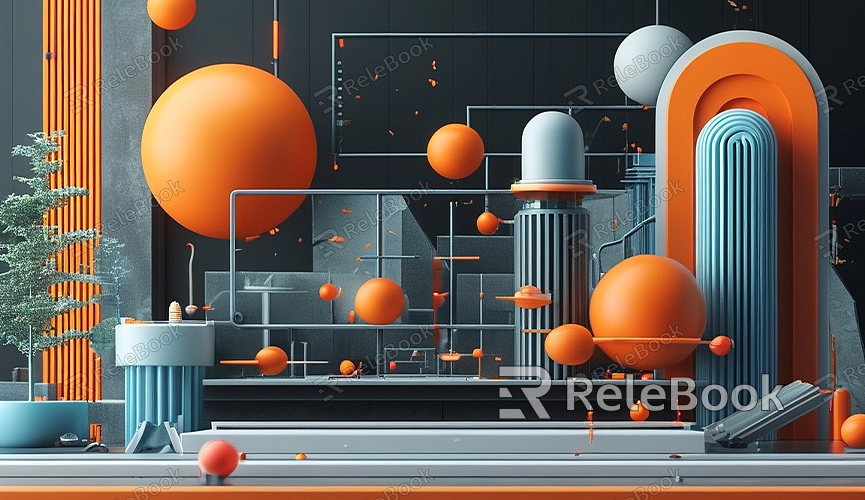How to Properly Render in Blender
Blender is a powerful 3D modeling and rendering software widely used in animation, game development, and visual effects. Proper rendering is key to producing high-quality 3D work. This guide will cover how to correctly render in Blender and provide tips to improve render quality and efficiency.
Setting the Render Engine
Blender offers two primary render engines: Eevee and Cycles. Choosing the right render engine is the first step to achieving high-quality renders.

- Eevee: A real-time render engine that is fast and suitable for previews and real-time displays, but with lower quality.
- Cycles: A ray-tracing render engine that offers higher quality but takes longer to render.
You can select the render engine by locating the render engine settings in the top-right corner of the Blender interface and choosing either Eevee or Cycles.
Adjusting Render Settings
Blender provides numerous render settings to fine-tune for the best render results.
Sampling
The number of samples determines how many times each pixel is traced by light rays. Higher samples result in better quality but longer render times. For preview renders, you might use lower samples (e.g., 64 or 128), whereas for final renders, higher samples (e.g., 500 or 1000) are recommended.
Light Bounces
Light bounces determine how many times light rays reflect and refract within the scene. Generally, 4 to 8 bounces provide good results, but you may increase this if your scene contains many reflective or refractive surfaces.

Denoising
Denoising reduces noise in renders, making the image smoother. Blender has built-in denoising features that can be enabled in the render settings.
Materials and Textures
High-quality materials and textures are crucial for realistic renders. In Blender, you can use PBR (Physically Based Rendering) materials, which accurately simulate real-world lighting and material effects.
To create a PBR material, add a Principled BSDF node in the Material Editor and connect it to the Material Output node. Then, you can add high-quality textures such as diffuse, normal, metallic, and roughness maps.
If you need high-quality 3D textures and HDRI for your models and virtual scenes, you can download them from Relebook. Importing these directly into your model will significantly enhance the quality of your renders.
Lighting Setup
Lighting setup greatly influences render results. Blender offers several common light types:
- Point Light: Emits light from a single point, similar to a light bulb.
- Spot Light: Emits directional light from a single point, similar to a flashlight.
- Ambient Light: Provides global illumination, simulating natural light.
Adjusting the position, intensity, and color of lights will yield different lighting effects. Additionally, using HDRI (High Dynamic Range Image) for environment lighting can increase the realism of your scene.
Render Output Settings
Before starting a render, set the render output parameters, including resolution, frame rate, and output format.
Resolution
Resolution determines the size of the rendered image. Commonly, 1080p (1920x1080) is used, but for higher quality, you can set it to 4K (3840x2160).
Frame Rate
Frame rate affects the smoothness of animations. Common frame rates include 24fps, 30fps, and 60fps. Choose an appropriate frame rate based on your needs.
Output Format
The output format determines the type of the rendered file. Common formats are PNG, JPEG, and EXR. For retaining high dynamic range information, EXR is preferred.
Starting the Render
Once all parameters are set, you can start the rendering process. In Blender's Render menu, choose "Render Image" for static images or "Render Animation" for animations.
Optimizing Render Time
Render time is a critical factor, especially for complex scenes and high-resolution renders. Here are some tips to optimize render time:
- Lower Samples: Reduce sample count while maintaining acceptable quality.
- Enable Denoising: Use denoising to achieve smoother images with fewer samples.
- Adjust Light Bounces: Set an appropriate number of light bounces based on the scene's requirements.
- Optimize Materials and Textures: Use suitable materials and textures, avoiding excessive details.
Proper rendering in Blender involves selecting the right render engine, adjusting settings, using high-quality materials and textures, setting up appropriate lighting, and optimizing render time. For high-quality 3D textures and HDRI, or 3D model downloads, you can use Relebook. Simply download the textures and models and import them directly into Blender to enhance your renders.

